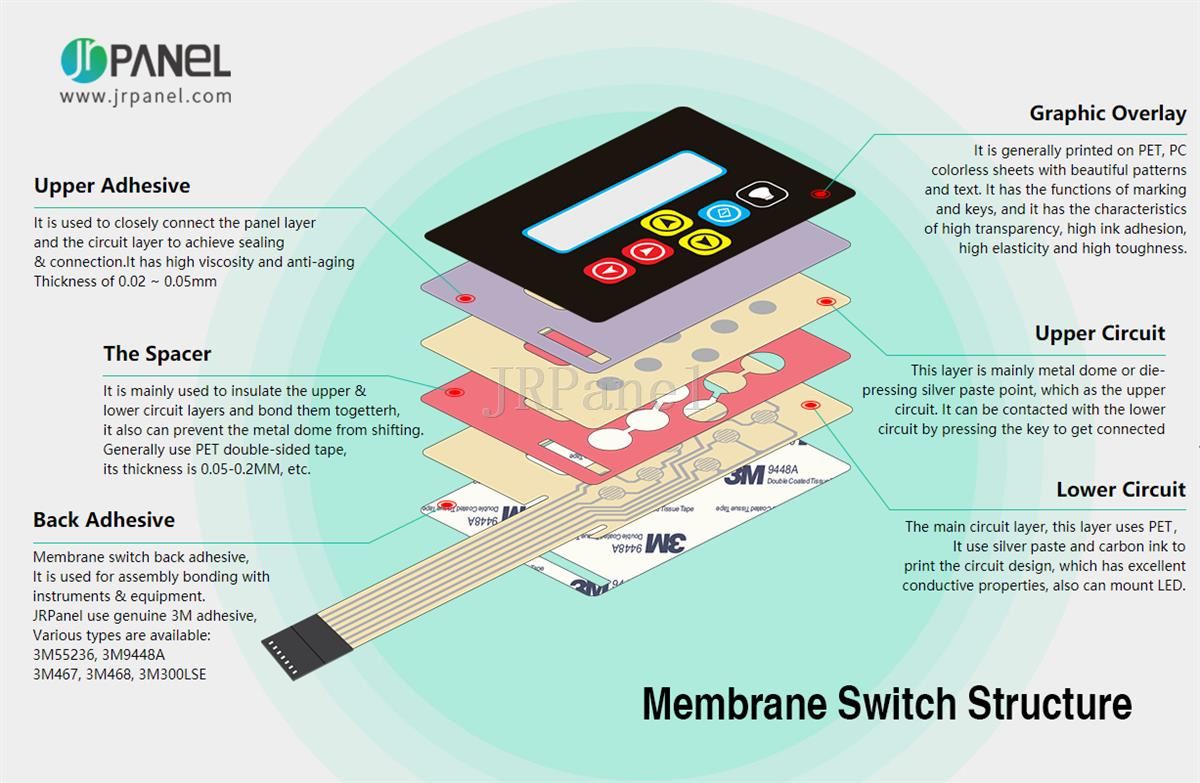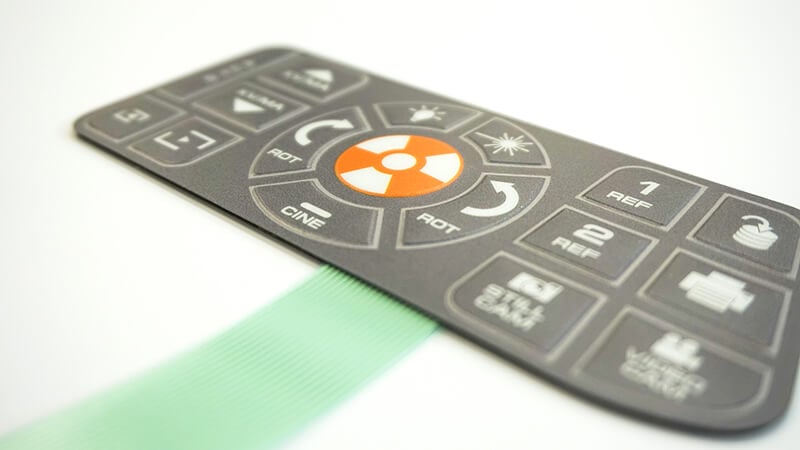How Membrane Changes Contribute to the Sturdiness of Electronic Control Panels
Membrane layer buttons play a vital function in boosting the longevity of electronic control panels, mostly through their multi-layered construction which offers efficient defense against environmental aspects such as dampness and dust. The absence of moving components significantly decreases the likelihood of mechanical failures, making membrane layer changes perfect for demanding applications.
Definition of Membrane Buttons

Membrane switches are created to be slim and lightweight, making them suitable for applications where area is restricted. They can be manufactured in numerous shapes, sizes, and shades, supplying adaptability in layout that satisfies aesthetic and useful demands. In addition, membrane buttons can integrate numerous modern technologies, such as responsive responses and LED indications, boosting individual experience.
As a result of their building and construction, membrane layer switches are frequently immune to dirt, moisture, and general wear, adding to their longevity popular settings. Their seamless layout not just helps with very easy cleaning however likewise minimizes the risk of mechanical failing, making them a recommended selection for producers looking for reliable interface in their digital control panels.
Security Against Ecological Factors
The style of membrane switches inherently supplies a degree of defense versus different ecological elements, which is crucial for keeping capability in difficult conditions - Membrane Switch. These buttons are typically built with layers of versatile materials that shield internal elements from dampness, dirt, and impurities. By encapsulating the wiring, membrane changes lessen the risk of short circuits and corrosion, which can considerably impair efficiency
Furthermore, making use of durable adhesives and sealers throughout production boosts their resistance to environmental obstacles. Membrane layer buttons can endure direct exposure to chemicals and solvents, making them suitable for sectors such as food handling and healthcare, where hygiene and sanitation are vital. Their seamless surface area layout likewise prevents the buildup of dirt and microorganisms, helping with less complicated cleaning and upkeep.
Temperature level variations are an additional environmental issue, and membrane buttons are crafted to function properly throughout a large range of temperatures (Membrane Switch). This adaptability makes certain that control board remain operational in various setups, from commercial environments to customer electronic devices
Influence On Customer Interaction
User communication with electronic control panels is considerably affected by the layout and capability of membrane buttons. These buttons give a responsive interface that enhances the general individual experience, permitting instinctive navigation and control. Their responsive nature makes certain that users obtain immediate feedback upon activation, which is crucial for tasks calling for precision and performance.
In addition, the smooth surface area of membrane layer switches facilitates very easy cleansing and upkeep, advertising individual self-confidence in the reliability of the interface. This tidiness is particularly important in settings where health is extremely important, such as clinical or food handling setups. Additionally, the small and light-weight design of membrane switches adds to the aesthetic appeal of control board, encouraging customer interaction through a modern and streamlined appearance.
Moreover, the integration of visual elements, such as printed icons and backlighting, aids individuals swiftly identify features, reducing the discovering contour connected with new equipment. Because of this, users can run gadgets better, resulting in raised productivity and complete satisfaction. In recap, membrane layer buttons play a pivotal function in enhancing individual interaction find out this here by combining performance, visual appeals, and simplicity of use, eventually resulting in enhanced operational efficiency.
Layout Versatility and Customization
Layout adaptability and modification are important aspects of membrane layer buttons, enabling makers to customize digital control panels to particular applications and individual needs. This adaptability permits for the assimilation of different design aspects, such as colors, graphics, and structures, which can improve the aesthetic allure and individual involvement of the control panel.
Membrane layer switches can be tailored in size and form, fitting a vast array of tools and applications, from industrial equipment to consumer electronics. This flexibility guarantees that makers can create instinctive user interfaces that align with user assumptions and operational needs. Additionally, the ability to include special attributes such as backlighting or responsive responses better improves use, enabling a much more interactive experience.
Moreover, the manufacturing procedure for membrane layer changes sustains the quick prototyping of layouts, allowing manufacturers to repeat and improve their principles promptly. This capability not only accelerates the advancement timeline yet likewise makes sure that the end product satisfies particular functional and aesthetic standards.

Cost-Effectiveness and Long Life
Cost-effectiveness and durability are significant advantages of membrane buttons, making them an eye-catching choice for producers and end-users alike. These buttons are generally much less costly to produce than traditional mechanical switches, mostly due to their streamlined production procedures and the lowered variety of elements needed. This cost advantage extends not just to initial production but likewise to long-lasting functional expenses, as membrane switches often call for less maintenance and have a reduced failing rate.
Furthermore, the long life of membrane layer changes contributes to their total worth. Constructed from long lasting materials, they are resistant to ecological factors such as dampness, dirt, and chemicals, which can result in early wear in other button kinds. The absence of relocating components reduces mechanical failing, allowing membrane layer switches over to keep functionality over prolonged durations.
This toughness is specifically advantageous in applications needing constant performance under requiring problems, such as medical tools and commercial devices. Eventually, the mix of cost-effectiveness and long life makes membrane anchor changes a financially feasible selection for producers, providing reputable options that withstand the test of time while maximizing financial factors to consider.
Conclusion
In verdict, membrane layer buttons dramatically enhance the toughness of electronic advice control panels via their durable construction and protective features - Membrane Switch. Overall, membrane layer switches over represent a trusted and cost-efficient selection for boosting the longevity and functionality of digital control systems.